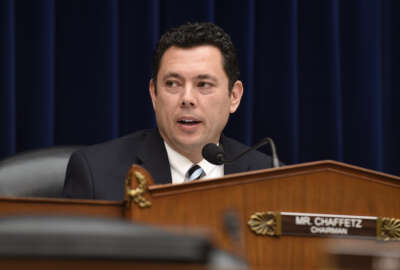Let’s play a game of connect the IT and digital services dots.
First dot: The House Oversight and Government Reform Committee’s hearing on legacy IT systems in late May.
Second dot: The committee’s hearing on the U.S. Digital Service and the General Services Administration’s 18F in June.
Third dot: The surprising decision by Phaedra Chrousos, the commissioner of the new Technology Transformation Service (TTS) at GSA, to step down from her position after only six weeks when she goes on maternity leave in July. There are strong rumors that the decision by Chrousos to leave may not been of her own thinking. But that’s a story for another time.
Fourth dot: Two letters from the committee to the Government Accountability Office asking for a report on USDS and 18F’s decision-making around what projects they take on, and on the authorities of federal chief information officers.
Fifth dot: Who is the former USDS or 18F employee who wrote Hilary Clinton’s, the presumptive presidential nominee for the Democratic Party, platform around technology and innovation? The platform calls for: Making the USDS and other digital services offices permanent; A continued trail of technology experts coming in and going out of government; Expanding digital services teams throughout every agency and ensuring CIOs are part of the innovation agenda. “She will maintain support for other federal tech programs—18F, Innovation Fellows, and Innovation Labs—and look to them to develop a coordinated approach to tackling pressing technology problems.” To use a radio analogy, seems like someone did a “rip and read” from the Obama administration, USDS and 18Fs current “about us” page on the Internet.
When you connect these dots together, you start to get a picture that this concept of digital services is moving out of the infancy and toddler stages, and into the teenage years where executive and legislative branch overseers expect more out of these groups.
“18F and USDS have been doing their own thing and not necessarily tied to high priority projects, and I think the letters were trying to get at that aspect and trying to figure out how it all fits together,” said Mike Hettinger, a former House staff member and now managing principal of Hettinger Strategy Group. “The timing is a result of they heard things at hearing that may not lead them to believe 18F and USDS are focused on the same priorities in government. I think it’s important for agencies to know Congress is watching what they are doing.”
The letter on the IT projects from six members of the committee is asking GAO to look at four specific areas, including how USDS prioritizes its work and where the top 10 priority projects fit into that assessment, and how USDS coordinates with agency CIOs when working on projects.
“The first GAO request letter is a direct result of the hearing and our goal of making sure USDS prioritizes their IT projects,” said a committee aide. “The USDS witness (Mikey Dickerson, the USDS administrator) acknowledged the need to prioritize. The GAO request is intended to collect information on prioritization efforts and help focus in the top 10 IT priority programs identified by OMB.”
Rich Beutel, a former committee staff member and now president of Cyrrus Analytics, said the results of the committee’s data call on legacy IT in government from about six months ago was “pretty jaw dropping.” He said he thinks the committee wants to make sure agencies are addressing the projects that are in the most need of updates.
The second letter to GAO focuses on CIO authorities and how agencies are implementing them under the Federal IT Acquisition Reform Act (FITARA).
The aide said the letter “is intended to collect more information to make sure agencies are implementing the CIO authorities sections of FITARA as intended and to collect more information to inform future FITARA scorecards.”
GAO will try to evaluate five areas around CIO authorities under FITARA, including what is the appropriate reporting relationship for CIOs across all 24 cabinet level agencies, and the extent to which CIOs approve contracts for IT products and services.
Beutel, who was a driving force behind FITARA when he worked on the committee, said GAO and the committee always planned to update the implementation scorecard and this is part of that effort.
“There has been a ground swell of unhappiness around the scorecard in agencies because some people think it’s unfair and misses the mark,” he said. “I think GAO’s David Powner has been talking to industry about how to improve the scorecard.”
The committee’s requests of GAO and its concerns that 18F will not pay back its “startup loan” until at least 2019 are the beginnings of higher expectations and the demand for better evidence of tangible outputs from these fast-growing and high-profile organizations. Otherwise, don’t be surprised to see these angel investors start to get nervous and slow down their funding stream.
Copyright
© 2024 Federal News Network. All rights reserved. This website is not intended for users located within the European Economic Area.
